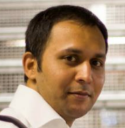Date: May 23, 2017
Time: 1:30-2:30pm ET
Abstract
Virtualized data-centers use software hypervisor switches to steer packets to and from virtual machines (VMs). The switch frequently needs upgrading and customization—to support new protocol headers or encapsulations for tunneling or overlays, to improve measurement and debugging features, and even to add middlebox-like functions. Software switches are typically based on a large body of code, including kernel code. Changing the switch is a formidable undertaking requiring domain mastery of network protocol design and developing, testing, and maintaining a large, complex code-base. In this talk, we argue that changing how a software switch forwards packets should not require intimate knowledge of its implementation. Instead, it should be possible to specify how packets are processed and forwarded in a high-level domain-specific language (DSL) such as P4, then compiled down to run on the underlying software switch. We present PISCES, a software switch that is not hard-wired to specific protocols, which eases adding new features. We also show how the compiler can analyze the high-level specification to optimize forwarding performance. Our evaluation shows that PISCES performs comparably to Open vSwitch, a hardwired hypervisor switch, and that PISCES programs are about 40 times shorter than equivalent Open vSwitch programs.
Bio
Muhammad Shahbaz is a third year Ph.D. student in the Department of Computer Science at Princeton University. His research focuses on the application of software-defined networking (SDN) in campus, enterprise and wide-area networks, network measurement and testing, and language abstractions for programmable data planes. Previously, he worked as a research assistant at the University of Cambridge, Computer Laboratory on the CTSRD and MRC2 projects and was a core member of the NetFPGA-10G project initiated by Stanford University. He received his Bachelor’s degree from the Department of Computer Engineering at National University of Sciences and Technology.
